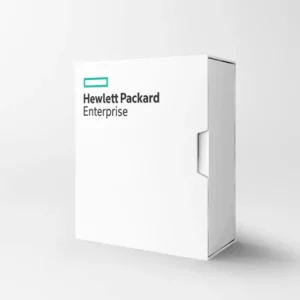HPE
Hewlett Packard Enterprise (HPE) is a leading global enterprise information technology (IT) company, known for providing a wide range of products and services including servers, storage, networking, and cloud solutions. HPE was formed in 2015 when Hewlett-Packard (HP) split into two companies: HP Inc., which focuses on personal computers and printers, and HPE, which focuses on enterprise technology infrastructure and services.
Here’s a detailed overview of HPE’s history, products, and contributions:
1. History and Formation
- Founding: HPE was created on November 1, 2015, as part of a strategic move to split Hewlett-Packard into two companies. HP Inc. retained the PC and printer businesses, while HPE was designed to focus on enterprise products and services.
- Founders: The original Hewlett-Packard (HP) was founded by Bill Hewlett and David Packard in a garage in Palo Alto, California, in 1939. HP played a critical role in the development of Silicon Valley as a technology hub.
2. Key Products and Services
HPE’s portfolio encompasses a broad array of enterprise IT infrastructure products, software, and services, catering to businesses of all sizes and sectors. The main offerings include:
Servers
- ProLiant Servers: HPE’s flagship line of servers, known for their reliability and performance. These are popular in data centers and business environments for applications ranging from basic computing to advanced workloads.
- HPE ProLiant DL (Dense Line): Rack-mounted servers designed for performance, versatility, and management in data centers.
- HPE ProLiant ML (Modular Line): Tower servers aimed at small and medium-sized businesses (SMBs) or remote offices.
- HPE Synergy: A hybrid infrastructure solution designed for both traditional and cloud-native applications.
- HPE Apollo: A high-performance computing (HPC) server designed for data-intensive workloads, such as scientific research, AI, and analytics. Apollo systems are used in some of the world’s most powerful supercomputers.
- HPE Superdome Flex: A mission-critical server designed for large-scale enterprise applications, offering exceptional scalability and performance for critical workloads, such as database management and ERP systems.
Storage Solutions
- HPE Nimble Storage: A flash-optimized storage solution that uses predictive analytics to prevent issues and improve data management efficiency. Nimble’s InfoSight is an AI-driven platform that provides insights into the storage environment.
- HPE 3PAR: A high-performance, enterprise-grade storage array designed for mission-critical workloads. It offers advanced data services, such as thin provisioning, data deduplication, and automated tiering.
- HPE Primera: A storage platform focused on delivering high availability and performance for applications with zero downtime. Primera is often used in enterprise environments where uptime is critical.
- HPE SimpliVity: A hyper-converged infrastructure solution that combines storage, computing, and networking into a single, scalable platform, making it easy for enterprises to deploy and manage.
Networking Solutions
- HPE Aruba: A leading brand in networking and wireless infrastructure. Aruba Networks, acquired by HPE in 2015, offers a comprehensive portfolio of networking products and services, including:
- Aruba Edge Services Platform (ESP): An AI-driven platform designed to automate, secure, and optimize enterprise networks.
- Aruba Switches and Routers: Designed for performance and scalability in enterprise networks.
- Aruba Wireless Access Points: Providing secure and high-performance wireless networking for businesses.
- Software-Defined Networking (SDN): HPE offers solutions that help businesses adopt SDN, allowing for more efficient, scalable, and programmable network infrastructures.
Hybrid Cloud and Edge Computing
- HPE GreenLake: A consumption-based, “as-a-service” offering that allows enterprises to pay only for the IT resources they use. GreenLake delivers on-demand cloud services in customers’ own data centers, blending the flexibility of the cloud with the control and security of on-premise infrastructure.
- HPE Ezmeral: A software platform that provides data-driven, open, and secure solutions for container orchestration, AI/ML development, and data management. Ezmeral is central to HPE’s edge-to-cloud strategy.
- Edge Computing: Through solutions like Aruba ESP and HPE Edgeline, HPE enables enterprises to process and analyze data closer to where it is generated, minimizing latency and bandwidth costs, and supporting real-time decision-making.
High-Performance Computing (HPC) and AI
- HPE is a leader in high-performance computing (HPC) and provides solutions that are used in academia, government, and enterprise research. Some of its key offerings include:
- Cray: In 2019, HPE acquired Cray, a supercomputing company known for creating some of the world’s fastest computers. Cray’s systems are used in research fields like weather forecasting, nuclear simulations, and AI training.
- HPE Machine Learning Development Environment (MLE): A platform for developing AI models that helps organizations scale AI and machine learning capabilities.
Software and Services
- HPE Pointnext: A suite of services that provides IT consulting, support, and management for enterprises. Pointnext focuses on helping businesses modernize their IT infrastructure, including cloud migration, edge computing, and AI adoption.
- HPE OneView: A management platform designed to simplify and automate the deployment and maintenance of IT infrastructure, including servers, storage, and networking.
3. Corporate Strategy and Vision
Edge-to-Cloud Platform Strategy
Under its CEO, Antonio Neri, HPE has shifted its focus to becoming a “platform-as-a-service” company with a strategy to provide end-to-end solutions that help customers manage data and workloads across on-premise, hybrid, and cloud environments. The company’s “edge-to-cloud” vision emphasizes the importance of integrating edge computing (processing data closer to where it is generated) with cloud services to deliver faster, smarter, and more efficient solutions.
As-a-Service Model
A key part of HPE’s growth strategy is the move to an “as-a-service” model, offering flexible consumption-based IT services through HPE GreenLake. This enables customers to use HPE’s solutions without large upfront investments in hardware, aligning with the increasing demand for subscription-based IT services.
4. Key Acquisitions
HPE has made a number of strategic acquisitions to strengthen its portfolio and accelerate its transformation into a hybrid IT and cloud company:
- Aruba Networks (2015): A major acquisition that added Aruba’s leading networking and wireless technology to HPE’s portfolio, positioning the company as a major player in enterprise networking.
- SGI (2016): HPE acquired Silicon Graphics International (SGI), a company known for its high-performance computing systems, to expand its presence in the HPC market.
- Nimble Storage (2017): Acquiring Nimble Storage allowed HPE to improve its offerings in flash storage and predictive analytics, enhancing its data management capabilities.
- Cray (2019): HPE’s acquisition of Cray brought cutting-edge supercomputing technology into its portfolio, allowing it to compete in large-scale HPC and AI applications.
- Zerto (2021): Acquired to enhance HPE’s disaster recovery and data protection capabilities in hybrid and multi-cloud environments.
5. Corporate Leadership
- CEO: Antonio Neri (since 2018). Neri has been instrumental in leading HPE’s transformation into a hybrid cloud and edge-to-cloud platform company.
- Former CEO: Meg Whitman led the company through its split from HP in 2015 and helped lay the foundation for its enterprise-focused strategy.
6. Key Competitors
HPE operates in highly competitive markets, facing strong competition from major IT infrastructure and cloud service providers. Some of its key competitors include:
- Dell Technologies: Dell is one of HPE’s biggest rivals, offering a similar range of servers, storage, networking, and IT services. Dell’s VMware offerings also give it a strong position in virtualization and cloud solutions.
- Cisco: Known primarily for networking, Cisco also competes with HPE in enterprise IT infrastructure, particularly in networking, software-defined solutions, and edge computing.
- IBM: IBM’s focus on hybrid cloud, AI, and enterprise solutions makes it a direct competitor to HPE, especially in the areas of IT services, software, and high-performance computing.
- Amazon Web Services (AWS) and Microsoft Azure: As cloud services continue to grow, HPE faces competition from hyperscalers like AWS and Azure. While HPE offers hybrid cloud solutions, these cloud giants dominate the public cloud space.
7. Sustainability and Social Responsibility
HPE is committed to sustainability and reducing the environmental impact of its products and services. The company has set ambitious goals to reduce its carbon footprint and improve energy efficiency in its data centers and IT infrastructure solutions.
Some of its sustainability initiatives include:
- Circular Economy: HPE focuses on designing products that are more durable, upgradable, and recyclable, and it offers programs to recover and recycle end-of-life products.
- Renewable Energy: HPE has committed to using 100% renewable energy for its operations by 2030 and has already made significant progress toward this goal.
8. Challenges and Future Outlook
HPE faces several challenges as it navigates the competitive and rapidly changing IT landscape:
- Competition in Cloud Services: While HPE is focusing on hybrid and edge computing, it must compete with the dominant cloud providers like AWS, Microsoft, and Google. Success will depend on HPE’s ability to differentiate its hybrid cloud offerings and leverage its enterprise expertise.
- Adapting to IT Consumption Models: The transition to consumption-based services is critical for HPE’s growth, and the success of GreenLake will play a key role in the company’s ability to capture market share in this new model.
- Edge Computing and AI: HPE is positioning itself as a leader in edge computing and AI, and future growth will depend on how well it can integrate these technologies into enterprise IT solutions.
Conclusion
HPE is a global leader in enterprise IT infrastructure, known for its innovative solutions in servers, storage, networking, and hybrid cloud. With its edge-to-cloud strategy and focus on “as-a-service” models like GreenLake, HPE is aiming to be at the forefront of the digital transformation for businesses. Through strategic acquisitions, leadership in HPC, and investments in AI and edge computing, HPE continues to evolve and compete in a dynamic and competitive industry.
Showing all 2 results

